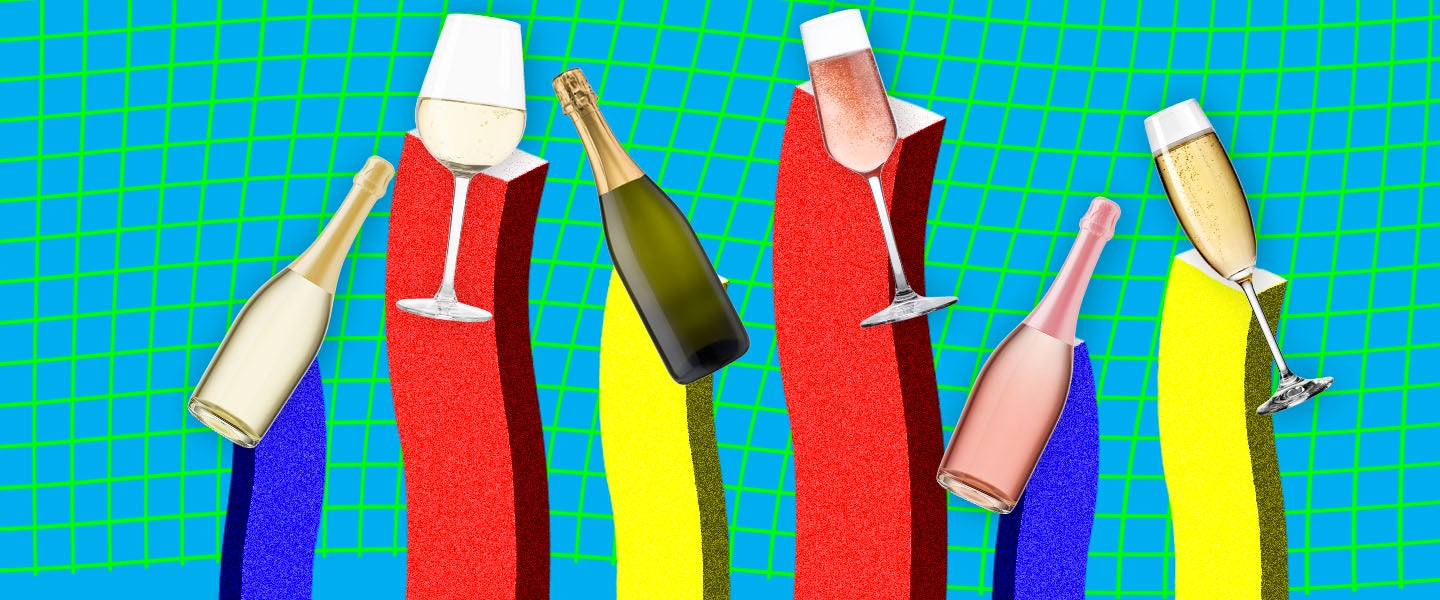Nothing screams New Year’s Eve like popping a bottle of bubbly and almost blasting your eye out in the process. You might want to think hard about what bubbly you choose to drink if you plan on getting ahead on your resolutions, though.
To ensure you make the best choice, I asked Dana Hunnes, senior dietitian at the Ronald Reagan UCLA Medical Center, and master sommelier Randall Bertao, to help me rank categories of sparkling wines by how unhealthy they are — from kinda unhealthy to diabetes-inducing.
But first, there are a few things to consider when ranking sparkling wine, the first being how much sugar they contain. “The biggest difference between sparkling wines is their sugar content,” Bertao explains. “A sugar and wine mixture called dosage is added before bottling, and those sugar levels can vary dramatically.”
Fortunately, figuring out approximately how much sugar any sparkling wine contains is as simple as checking the bottle for indicative terms. “Extra brut is the driest, followed by brut, extra dry and doux,” Berta explains (the drier the wine, the less sugar it contains). “Sugar levels can be up to 15 grams per liter for brut, and all the way up to 50-plus grams for doux.”
Sugar aside, sparkling wines with higher alcohol contents are also (perhaps obviously) less healthy. But this is where the ranking gets tricky: Hunnes explains that sparkling wines with lower alcohol contents often contain more sugar, since a shorter fermentation process — which produces a less alcoholic beverage — eliminates less sugar than a longer fermentation process.
All of which means there are two ways to rank categories of sparkling wines: By their sugar content, or their alcohol content. It’s also worth remembering that the amount of sugar or alcohol in any one brand of sparkling wine can vary drastically no matter what category it is, making this ranking even more difficult.
With that, here’s Bertao’s ranking (with some insight from Hunnes):
1. Champagne: This sparkling wine comes from the region of Champagne, France. The average four-ounce glass of champagne has an alcohol content of about 12 percent and contains roughly two grams of sugar (again, though, that depends on the brand).
2. Crémant: Produced in several parts of France, the average bottle of crémant has a slightly lower alcohol content than most champagnes, and therefore, perhaps slightly more sugar as well.
3. Cava: Cava comes from the Spanish town of Catalonia, and it’s primarily made from the Spanish grape, Macabeo. Most bottles of cava have an alcohol content that rivals champagne.
4. Sekt: This is the German version of sparkling wine, and it’s come to be known for its less-than-usual alcohol content, which can be as low as six percent. This certainly isn’t always the case, but Hunnes once again mentions that sekt probably contains high amounts of sugar as a result.
5. Rosé: Rosé comes from all over the place, including Italy, France and California. The alcohol content in rosé is, more or less, equal to that in champagne; however, because many brands of rosé are sweet, they also tend to be pretty high in sugar. There are low-sugar brands out there, though!
6. Prosecco: Prosecco comes from Italy, and it’s usually made from Glera grapes. Similar to rosé, it tends to be on the sweeter side — even though most proseccos have an alcohol content of about 12 percent — which means it can boast quite a bit of sugar.
There you have it! But I can’t repeat enough that, more than anything, this ranking emphasizes the importance of checking your bottle before slugging it down, because when it comes to wine, every bottle and every brand can differ drastically.
Other than that, happy New Year’s, and remember: Watch those eyes when you pop that bottle.

